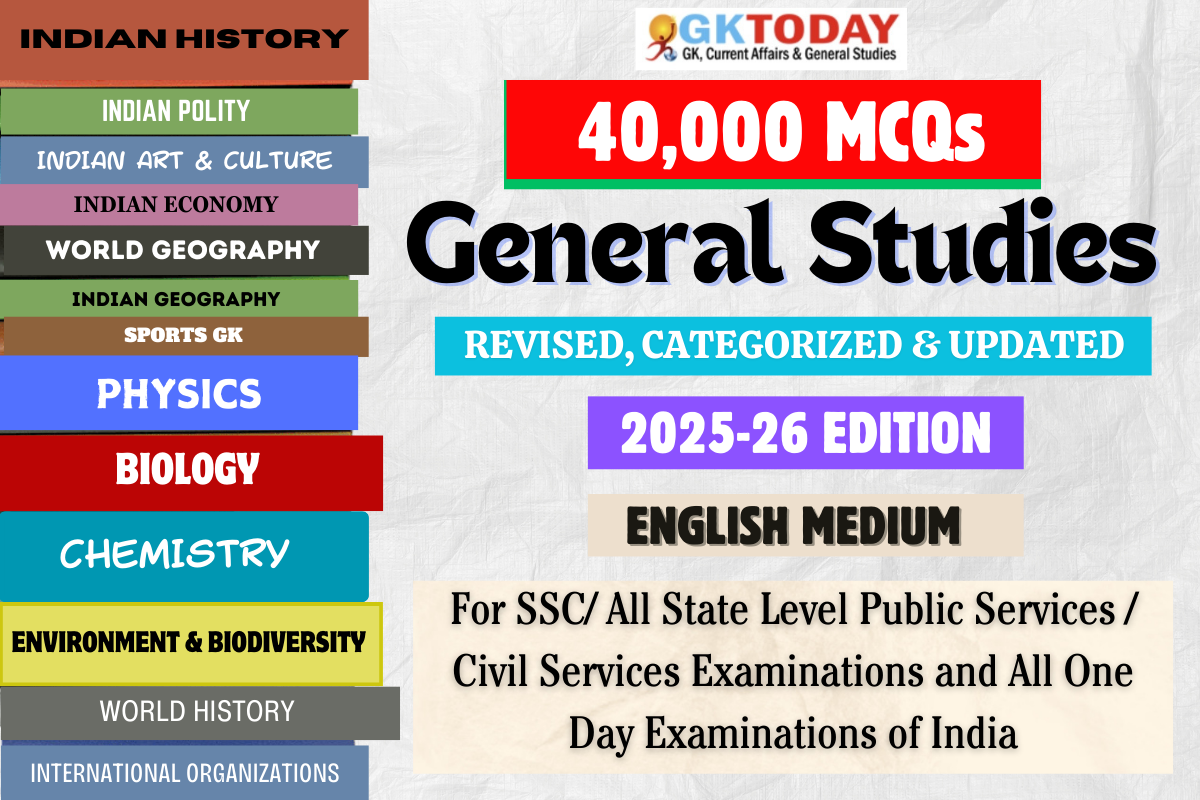Indian Geography MCQs
Indian Geography Multiple Choice Questions (MCQs) Quiz for State and UPSC Civil Services Examinations. Objective Questions on Indian Geography for competitive examinations.
31. Dool Hasti project is situated across which of the following river?
[A] Sutlej
[B] Ravi
[C] Chenab
[D] Beas
Show Answer
Correct Answer: C [Chenab]
Notes:
The Dool Hasti project is situated across the Chenab river in the state of Jammu & Kashmir. In the year 1986, it was commissioned.
32. Which among the following states of India has the highest installed solar power generation capacity?
[A] Andhra Pradesh
[B] Karnataka
[C] Gujarat
[D] Tamil Nadu
Show Answer
Correct Answer: B [Karnataka]
Notes:
The state of Karnataka has the highest installed solar power generation capacity (About 5300 MW). The Pavagada Solar Park of Karnataka is one of the largest solar parks in the world.
33. Which of the following plant is India’s largest operational onshore wind farm?
[A] Jaisalmer Wind Park
[B] Damanjodi Wind Farm
[C] Tuppadahalli Wind Farm
[D] Muppandal Wind Farm
Show Answer
Correct Answer: D [Muppandal Wind Farm]
Notes:
The Muppandal Wind Farm situated in Tamil Nadu is the largest operational onshore wind farm of India. It has a total capacity of 1,500 MW.
34. The term ‘operation flood’ refers to which of the following?
[A] Foodgrain production
[B] Flood control
[C] Milk production
[D] Population control
Show Answer
Correct Answer: C [Milk production]
Notes:
Operation Flood in India is a project of the National Dairy Development Board (NDDB). It was the world’s biggest dairy development program.
35. Which of the following is the main sources of irrigation in India?
[A] Tank
[B] Canal
[C] Wells & Tubewells
[D] None of the above
Show Answer
Correct Answer: C [Wells & Tubewells]
Notes:
Wells & Tubewells is the main source of irrigation in India. About 63.15% of areas are irrigated through Well & Tubewell.
36. Which among the following matches of industry and the industrial center are correct?
1. Aluminium- Renukoot
2. Heavy Electricals- Jagdishpur
3. Petrochemicals- Vadodara
4. Cotton Textiles- Coimbatore
Choose the correct option from the codes given below :
[A] 1 & 2
[B] 1, 2 & 4
[C] 2, 3 & 4
[D] 1, 2, 3 & 4
Show Answer
Correct Answer: D [1, 2, 3 & 4]
Notes:
Aluminium- Renukoot (Uttar Pradesh). Heavy Electricals- Jagdishpur (Uttar Pradesh). Petrochemicals- Vadodara (Gujarat). Cotton Textiles- Coimbatore (Tamil Nadu).
37. Which among the following matches of steel plants and their foreign cooperation countries are correct?
1. Bhilai Iron and Steel Plant- Russia
2. Raurkela Iron and Steel Plant- Germany
3. Durgapur Iron and Steel Plant- United Kingdom
4. Bokaro Iron and Steel Plant- Russia
Choose the correct option from the codes given below :
[A] 1 & 2
[B] 2 & 4
[C] 1, 2 & 4
[D] 1, 2, 3 & 4
Show Answer
Correct Answer: D [1, 2, 3 & 4]
Notes:
The correct matches are Bhilai Iron and Steel Plant- Russia, Raurkela Iron and Steel Plant- Germany, Bokaro Iron and Steel Plant- Russia, Durgapur Iron and Steel Plant- United Kingdom.
38. Which among the following is the most important industrial region of India?
[A] Mumbai-Pune Industrial Region
[B] Kolkata-Hugli Industrial Region
[C] Ahmedabad-Vadodra Industrial Region
[D] Chotanagpur Industrial Region
Show Answer
Correct Answer: A [Mumbai-Pune Industrial Region]
Notes:
Mumbai-Pune Industrial Region is the most important industrial region of India. The region is mainly developed by the British.
39. The rate of population growth during the 2001-2011 decade declined over the previous decade (1991-2001) except which of the following state?
[A] Goa
[B] West Bengal
[C] Tamil Nadu
[D] Kerala
Show Answer
Correct Answer: C [Tamil Nadu]
Notes:
Growth of population from 1991-2001 in Tamil Nadu was 11.7% and from 2001-2011 it was 15.6%.
40. As per Census 2011, the concentration of the Scheduled tribe population is the highest in which of the following states?
[A] Odisha
[B] Rajasthan
[C] Madhya Pradesh
[D] Andhra Pradesh
Show Answer
Correct Answer: C [Madhya Pradesh]
Notes:
As per Census 2011, the concentration of the Scheduled tribe population is the highest in the state of Madhya Pradesh.

